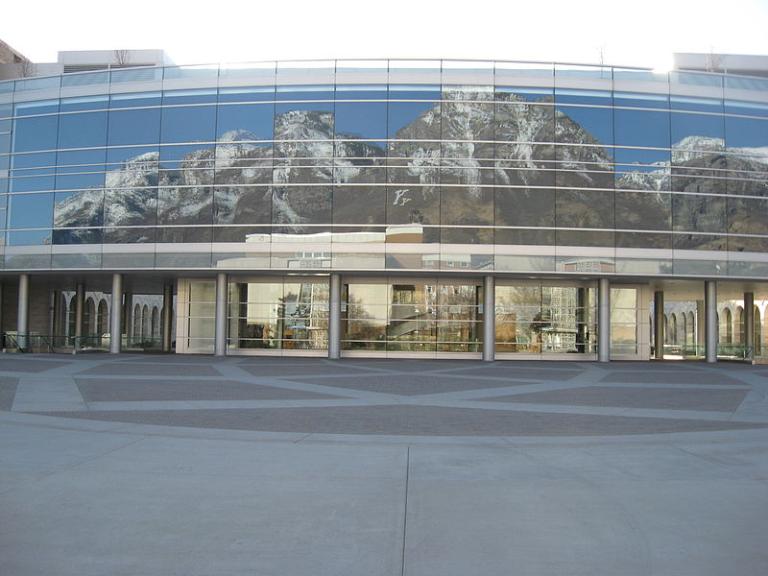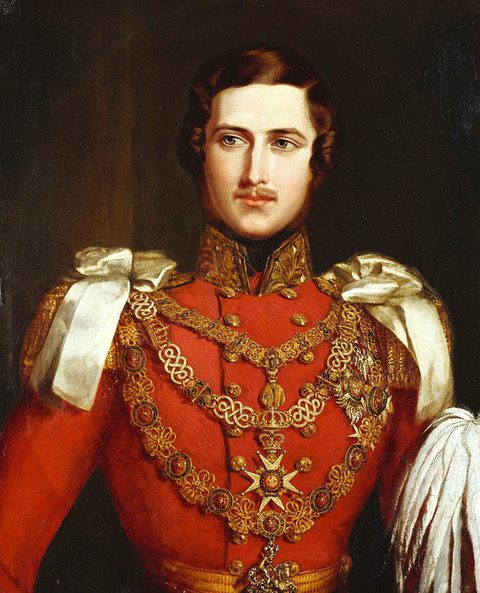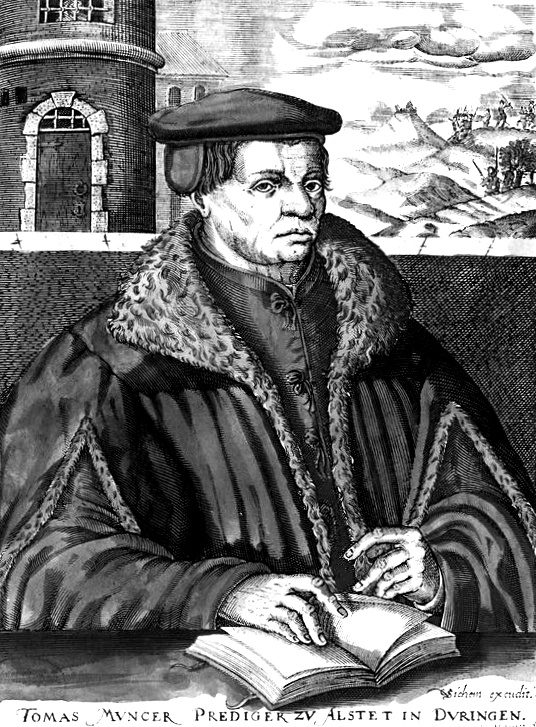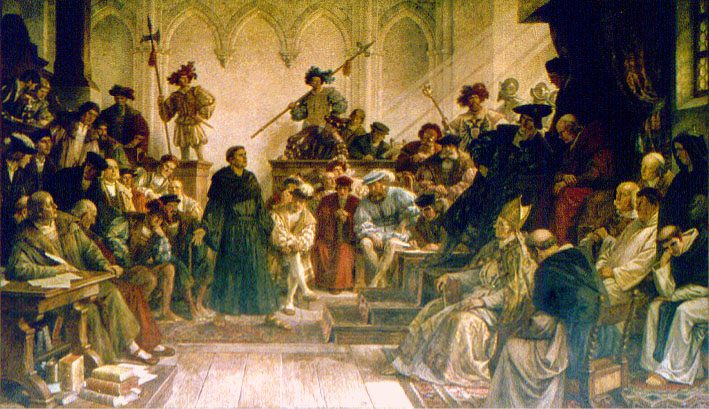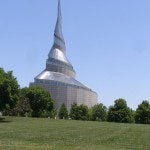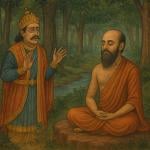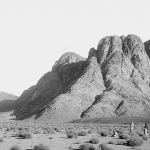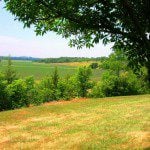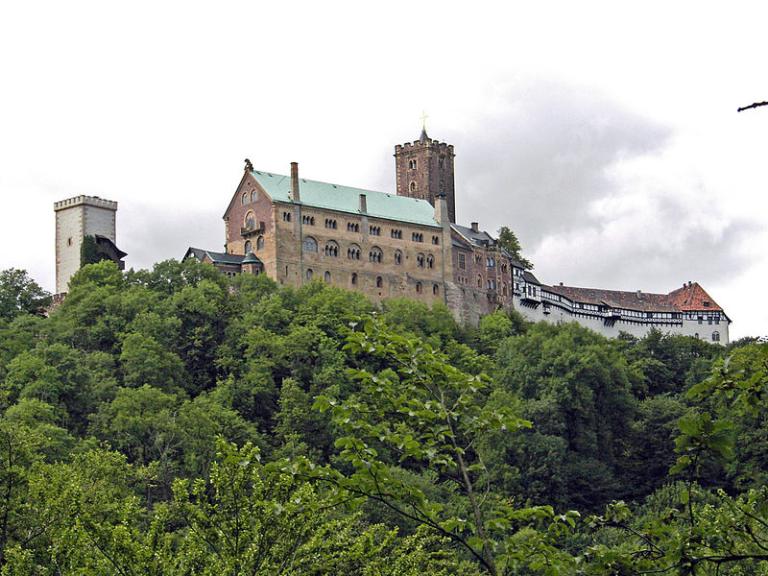
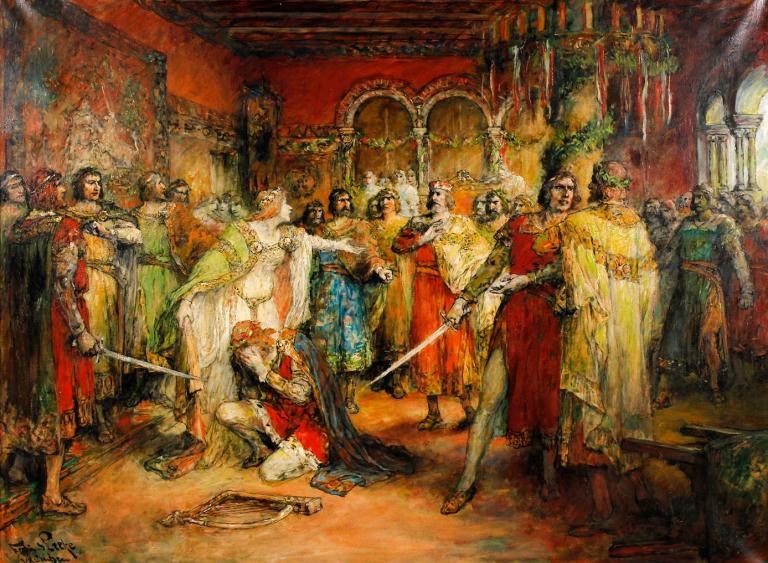
Wikimedia Commons public domain image
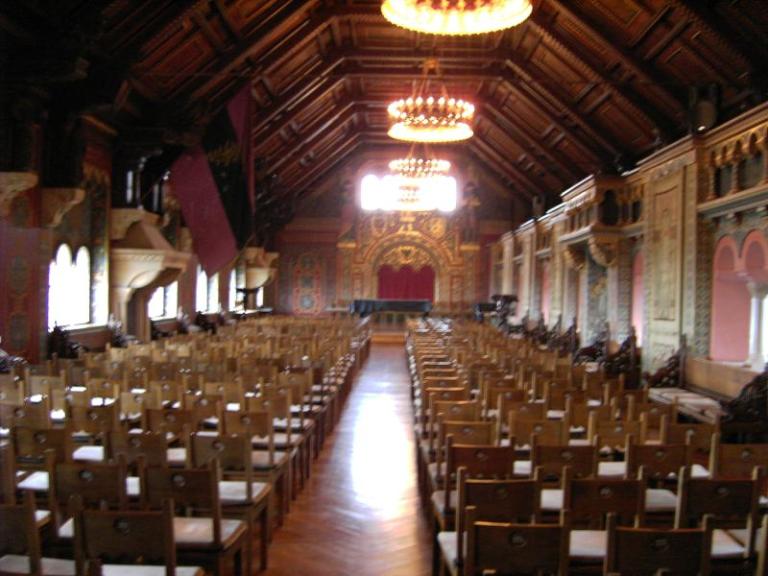
(Wikimedia Commons public domain image)
***
Before leaving for the Wartburg yesterday, we did a guided walking tour within the walls of Rothenburg ob der Tauber. It’s a quaint and picturesque little city, the very image of a late medieval German town. (Or even of a French one. I can easily imagine the story of Beauty and the Beast being filmed in Rothenburg o.d.T.) We had visited it only once before, so this brief repeated stay and the excellent local guide who took our group around really helped us to learn more about the place.
The drive from Rothenburg to the Wartburg and on to Lutherstadt Wittenberg was a long one, so, naturally, being precisely the monster of sadistic cruelty that my most keen-eyed online critics intuitively know me to be, I sought to make it yet longer and even more miserable for the hapless members of our tour group. I accomplished my fiendish design by discoursing on the bus about Martin Luther, the Reformation, and, yes, the Wartburg. After all, they had no real means of escape.
The Wartburg is an eleventh-century fortress looking down upon the town of Eisenach, where, eventually, Martin Luther would attend school and where, even later, Johann Sebastian Bach would be born. For several years before her death in 1231 at age twenty-four, St. Elizabeth of Hungary (or St. Elizabeth of Thuringia) lived in the fortress. Already by her time, though, the Wartburg had been the scene of the famous Sängerkrieg (“minstrel contest,” also known as the Wartburgkrieg), in 1207. If this competition really occurred at all, which it may not have, it involved such famous genuine medieval Minnesänger as Walther von der Vogelweide and Wolfram von Eschenbach (the author of Parzifal) and the at least semi-fictional magician Klingsor of Hungary and the semi-fictional poet Heinrich von Ofterdingen. Later, it features prominently in a number of important literary works, and in Richard Wagner’s music-drama or opera Tannhäuser. (Listen here to the majestic “Pilgrims’ Chorus” from Wagner’s opera.)
In 1817, the Wartburg was the site of an important meeting that reflected some of the earliest stirrings of German nationalism and that, though unsuccessful in its own time, marked a milestone on the road to the unification of Germany.
But the fortress is most famous as the place where Martin Luther, proclaimed an outlaw by Emperor Charles V, was hidden for the better part of a year (1521-1522) after a feigned kidnapping on the road back from Wurms to Wittenberg, and where, in a remarkable ten or eleven weeks, he translated the New Testament into German. Thereby, he essentially created Hochdeutsch (the “High German” language) and revolutionized the religious landscape of Europe.
I was really pleased for our group to see the Wartburg and to learn something of its remarkable history. It has even been suggested that his time living as a boy in the shadow of the Wartburg and his months living as an adult in the Wartburg under the assumed name of Junker Jörg (“Squire George”) influenced the formulation of Luther’s most famous hymn, “A Mighty Fortress is Our God” (“Ein feste Burg ist unser Gott”). I’m sympathetic to the suggestion.
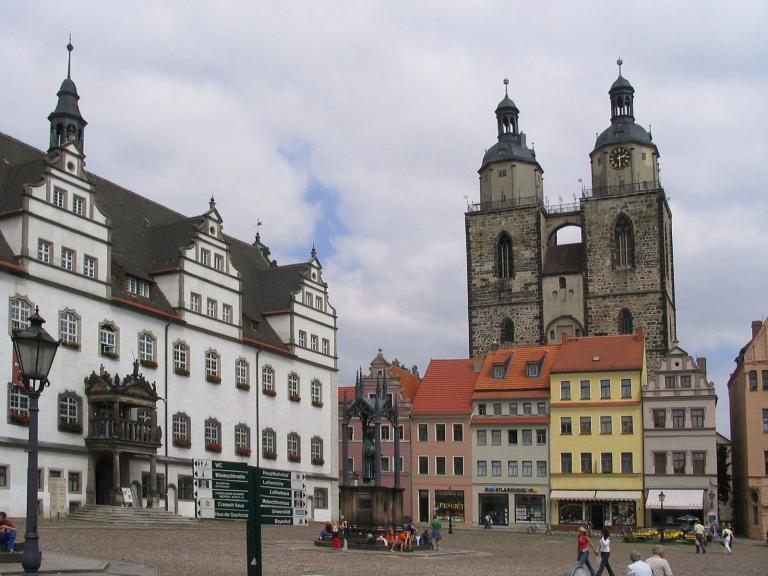
(Wikimedia Commons public domain image)
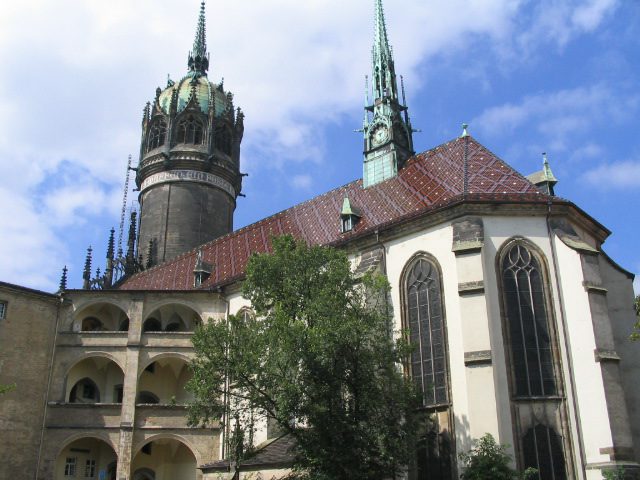
(Wikimedia Commons public domain image)
From the Wartburg, we drove on to Lutherstadt Wittenberg. That’s its official name now: Luther City Wittenberg. I’ve wanted to bring a group to Wittenberg ever since I first visited it about seven or eight years ago. In fact, I published an article about the town in the Deseret News, back on 13 June 2015:
“A small German town with a vast history”
We arrived in Wittenberg fairly late in the evening. This morning, though, a good local guide joined us for a walking tour of the Altstadt or “Old City.” And, this time, I was pleased to be able to go inside the Schloßkirche or “Castle Church” where Martin Luther and Philipp Melanchthon and Friedrich, the Elector of Saxony and Luther’s protector, are buried. The church had been closed for renovations during our prior visit to Wittenberg, because the five hundredth anniversary of the Lutheran Reformation was approaching. And what event was chosen to mark the beginning of Luther’s Reformation? It was Luther’s nailing of his famous “Ninety-Five Theses” to the door of precisely this “Castle Church,” on 31 October 1517. After our walking tour had concluded, and after lunch, some of us spent most of our time in Luther’s house, the former Augustinian cloister of Wittenberg, which is now an excellent museum of Luther and the Reformation.
A word about our hotel: To my very great pleasure, our group stayed in the same hotel where my wife and I had lodged during our first visit. I had been disappointed, on that occasion, when I learned that we were going to be staying in the Best Western there. But my attitude changed instantly when I grasped where it was, directly next door to Luther’s house, within just a few feet of Melanchthon’s house, and not more than several blocks of level walking from all of the other major Reformation sites in Wittenberg. Location, location, location! Absolutely fabulous. And I was pleased today to find that my memory was correct about one site that, curiously, our walking tour didn’t cover: A few hundred yards from our hotel, in the opposite direction from the former university and the Schloßkirche and almost all of the other sites, is a small park marking the place where, in 1520, Luther burned Pope Leo X’s bull of excommunication. I led a small subset of our group to it, and was relieved to find that my memory hadn’t led me (and them) astray. Later, as our bus drove out of the town, we passed by the little park and I was able to point it out to the others.
Posted from Berlin, Germany



